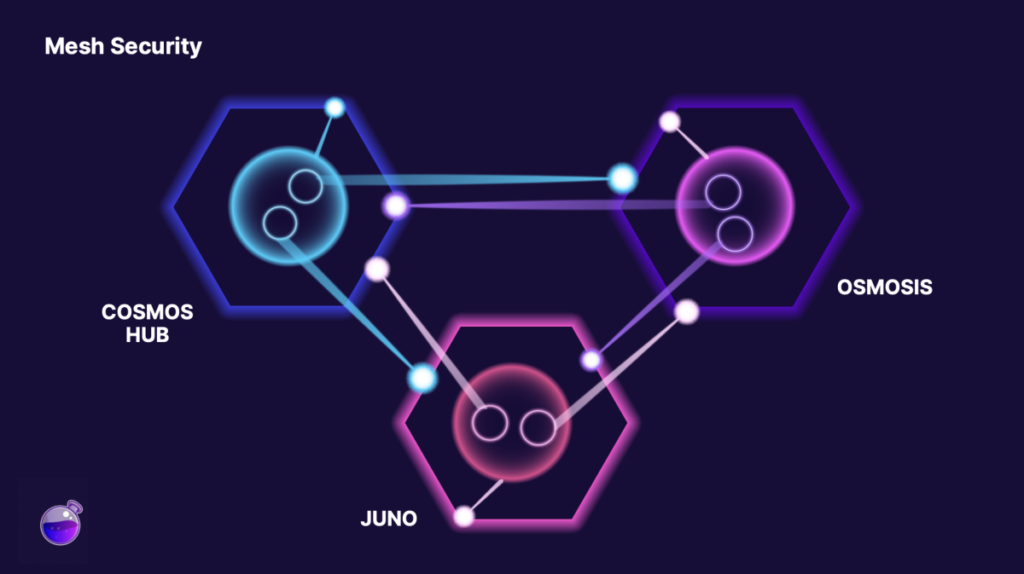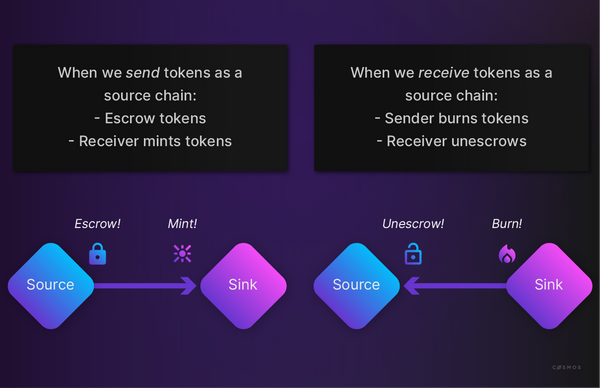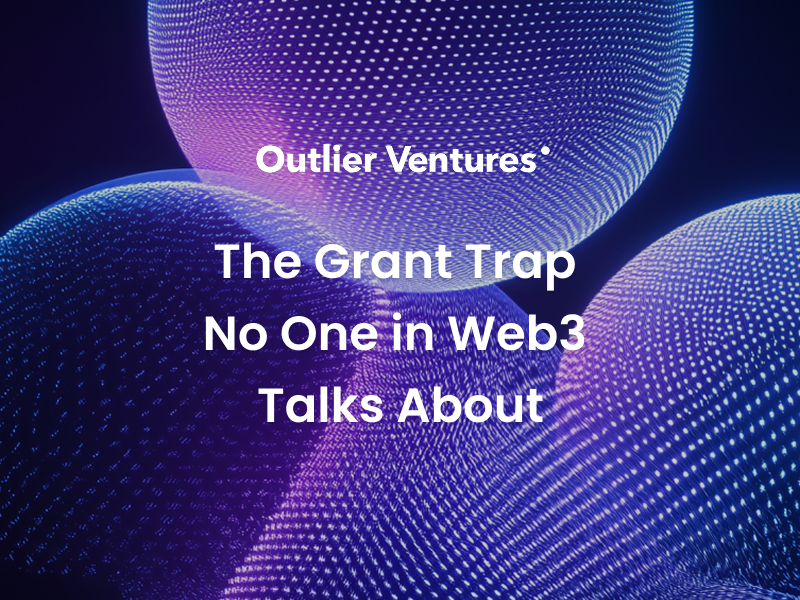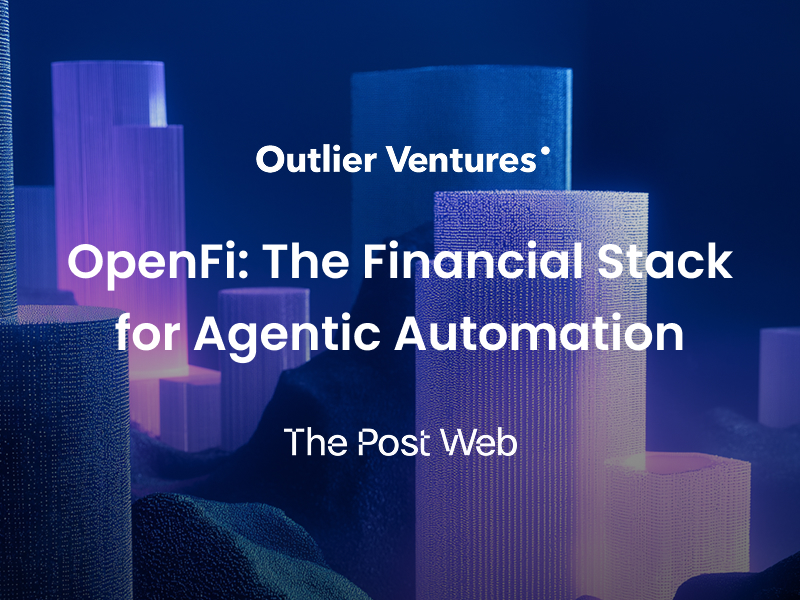At Outlier Ventures, we believe in supporting the very best and most innovative solutions that will help shape our collective decentralised future. Since Cosmos – aka ‘the Internet of blockchains’ – launched in 2016, it has developed into a thriving ecosystem, with more than 240 interconnected applications and services.
Its separate application-specific chains are built from modular components and connected by the IBC (Inter-Blockchain Communication) Protocol. We believe that this architecture is an important part of successfully scaling blockchain technology, and are proud of the part we are playing in helping grow projects that are building on Cosmos or creating tooling that will encourage further development in this exciting area.n this post, we first look at what is happening in the wider Cosmos ecosystem, and then deep-dive into some project-specific updates from our portfolio.
In the meantime, if you would like to know more about accelerator programs, please visit our application site.
Ecosystem Updates
The Cosmos Hub Whitepaper v1.2
To address the vulnerability of new chains to 51% attacks, Cosmos has introduced interchain security in their new Whitepaper, with the on-chain functionality going live in Q2 2023. This mechanism allows chains to rent security from the Cosmos Hub, similar to Polkadot’s shared security model. However, Cosmos’ interchain security offers more flexibility, enabling appchains to pay a percentage of transaction fees to validators for security. To reduce reliance on the Cosmos Hub, the co-founder of Osmosis proposed the Mesh Security solution. With this technology, each chain can have its own set of validators, and Cosmos Hub validators can participate in the consensus of consumer chains. This mesh structure ensures economic communication and fosters closer collaboration, empowering validators and promoting equality among chains.
Another major proposal in the new Whitepaper is about bringing liquid staking to the Interchain. Cosmos Hub’s new liquid staking model generates revenue from various sources, including inter-chain transaction fees and inter-chain security fees. The redesign of the ATOM token’s issuance scheme aims to enhance its weight and value capture capabilities, aligning it with Cosmos Hub’s new features. The Whitepaper envisages that this “market for cross-chain liquidity will be the catalyst for ATOM deployment across the interchain, creating new waves of innovation built on secure Cosmos-native collateral”
To provide a general system for decentralised autonomous organisations (DAOs), Cosmos Hub also introduces the governance stack. This framework includes the Consensus Council, Interchain Security Council, and Allocation DAO, offering a standardised governance model for all DAOs. The power hierarchy model defines the relationships and responsibilities of different organisations, enabling the Cosmos Hub to make important decisions regarding treasury funds and the balance of interests among Dapp chains.
The proposed upgrades to Cosmos Hub aim to address the fragmented state of the Cosmos ecosystem and enhance the value capture capability of the ATOM token. By constructing new modules and implementing advanced features, Cosmos Hub seeks to become the core of the network. With the recent announcement of native USDC implementation, the ATOM/USDC trading pair is expected to generate significant fee revenue and unlock new use cases for the ATOM token. However, the proposed updates covering the restructuring of the Cosmos Hub failed to pass the community’s voting session and never reached production.

IBC
The Inter-chain Blockchain Protocol (IBC) solves a specific problem – cross-chain communication. It does this by providing a way to permissionlessly relay data packets between blockchains. While IBC initially focused on token transfers (Figure 2) and cross-chain state interaction, its potential use cases have expanded to include more complex applications, such as transferring security and trust (Figure 1). The efforts of Informal Systems and Aditya Sripal from Interchain GmbH in designing and implementing Interchain Security deserve recognition for their contributions.
Beyond the core development teams, several projects are actively exploring innovative IBC applications and striving to integrate IBC with other ecosystems. Exciting initiatives include IBC bridges to Polkadot, Ethereum, Avalanche, and inter-rollup communication. Additionally, projects like Babylon and Penumbra are leveraging IBC to enhance security and unlock new capabilities for IBC-enabled chains, while Secret Network leverages IBC for offering the entire ecosystem fast and secure access to VRFs, providing on-chain randomness.

Outlier Ventures’ Cosmos-focused Portfolio Projects
Agoric
In 2022, Agoric, the blockchain that enabled Javascript smart contracts in the Cosmos ecosystem, reached the end of Mainnet-1, which was a major milestone for the platform after four years of development. The Mainnet-1 launch happened on October 27, 2022, and was followed by the Mainnet-1B upgrade, which introduced enhanced features such as an Agoric VM, an oracle network, and a set of Hardened JavaScript smart contracts.
The first decentralised application of the Agoric blockchain is Inter Protocol, the hub around the first IBC-enabled stablecoin of the Cosmos ecosystem, IST. In the first half of 2023, users could only use stablecoins such as USDC, USDT and DAI to mint IST, but starting this summer, they were able to also deposit volatile assets as collateral for the minting process. The Inter Protocol team just launched the ATOM vaults on the Mainnet version of the app, allowing users to deposit ATOM tokens and mint IST against their collateral.
Cudos
Cudos is a Layer 1 blockchain and Layer 2 community-governed cloud computing network that offers Infrastructure as a Service (IaaS) marketplace to provide decentralised, permissionless access to high-performance cloud computing at scale. Cudos’ Blockchain Compute technical preview unites cloud and blockchain for Web3, and its native utility token, CUDOS, plays a crucial role in powering the platform. Cudos aims to converge cloud and blockchain services fully, champion user privacy and sustainability, and provide decentralised computing resources for the masses.
One of the newest decentralised applications on the Cudos Blockchain is called Cudos Markets, a sustainable assets NFT marketplace that allows users to buy, sell and collect Bitcoin mining Hashrate NFTs. The NFT ownership grants the users access to mining power for a period of 4 years, time in which the holders receive the mining rewards associated with the hashrate they own on the Cudos Markets. The long-term goal is to provide a completely decentralised marketplace for all computing needs.
Secret Network
In May 2023, Secret Network launched Secret VRF, a secure and verifiable random number generator (“RNG”) that is now available for developers to use. This RNG allows for the creation of truly random numbers on the blockchain, without compromising security or usability. It eliminates the need to rely on off-chain solutions that are often unreliable, centralised, costly, and detrimental to the user experience. Secret VRF solves the technical challenges of on-chain RNG by generating random numbers that are not predictable while still being deterministic.
Secret Network’s utilisation of SGX technology enables private computation on-chain and gives it a distinct advantage as a provider of privacy in the interchain. They implemented a random number generator within a Trusted Execution Environment (TEE), reducing the attack surface on the RNG, while still ensuring the VRF’s integrity can be verified. The Secret VRF is primed to provide verifiable on-chain randomness, unlocking many new Web3 use cases. This represents a major breakthrough for the Cosmsos universe, limiting their dependency on Chainlink VRF oracle. This useful tool can be used by both Secret Network’s community, but also by the other IBC-enabled Cosmos chains, serving as a secure randomness foundation for the Interchain.
Fetch.AI
Fetch’s Agentverse has launched its latest version, Agentverse v5, which includes a new feature that allows agents to have wallets. With this update, agents can interact with the Fetch.ai ledger, send and receive transactions, and tap into a world of possibilities. Developers can now leverage the ctx.ledger and ctx.wallet objects to engage with the Fetch.ai ledger and conduct transactions seamlessly.
The new feature empowers agents to send tokens directly from their wallets to specific addresses, facilitating payments or enabling token transfers. The Agentverse editor displays the agent’s wallet address at the top of the page, making it more convenient to manage agent wallets. It also enables agent-to-agent transactions, made possible by the Agentverse wallet integration.
Agentverse provides a user-friendly platform to create, test, and deploy intelligent agents, regardless of the level of experience regarding agent-based technology. Leveraging the new features of v5 will definitely help in building intelligent agents that can seamlessly interact with the Fetch.ai ledger.
Cheqd
Zero Knowledge Proofs (ZKPs) is a prominent topic in Web3, and it’s fascinating to see multi-protocol initiatives for creating new tools that give consumers access to more private and independent online experiences. ZKPs provide a special fusion of trust, flexibility, and privacy when used with Verifiable Credentials. As a result of their partnership with the famous SSI frameworks Hyperledger Indy and Hyperledger Aries, together with Cheqd’s main partner, Animo, Cheqd recently announced support for Zero Knowledge Credentials (ZKCreds). They are now offering their partners the well-known ‘AnonCreds’ Verifiable Credentials.
Recently, Cheqd unveiled creds.xyz, a new protocol to accompany ZKCreds. Creds, the project’s central component, provides a way to establish your reputation and demonstrate your authenticity in a private and secure setting. Creds are transferable, reusable, and adaptable to various platforms and ecosystems, in contrast to NFTs and SBTs. Creds are both private, giving users control over who can access their information, and revocable, providing users with configurable access control. Creds can also help users prove that they are human, rather than an AI.
Kima Finance
Kima aims to defragment DeFi by providing an open infrastructure and building blocks for cross-chain apps. DeFi is currently fragmented due to technical, financial, and regulatory obstacles, resulting in liquidity pools, options, vaults, strategies, and future contracts being locked within the boundaries of the network and smart contracts. This fragmentation leads to poor user experience, limited functionality, insufficient liquidity, and high costs. To increase adoption and unlock value, DeFi must become unfragmented, with interoperable, interconnected, user-friendly, and smart services.
The Kima protocol provides a robust technological infrastructure, pre-made functionality blocks, tokenomics, and apps to address these issues and create a more seamless DeFi experience. They just announced a public demo of their app being deployed on Devnet which allows users to test various functionalities of their suite of products.
Cosmos is an ever-growing ecosystem, having new innovative chains being developed at all times. With the ingenious improvements around IBC and interchain support, together with the great continuous development of existing appchains, security, interoperability and the user experience have become better than ever and the space is ready for new cosmonauts to explore. At Outlier Ventures we truly believe in acting as a compass for fostering creativity and igniting growth inside the Cosmos ecosystem by working with a large number of teams every quarter on various verticals, aiming at contributing to the success of the Internet of Blockchains.
If you would like to learn more about our accelerator programs and how we can help your team, come and see me at Cosmoverse Istanbul, October 2-4, 2023. You can reach me on Twitter here.




